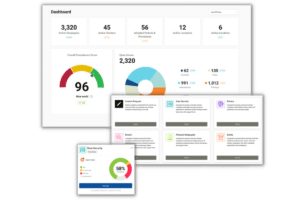What is a Medical Release Form NY?
New York law requires healthcare providers to obtain a medical release form (sometimes called a medical records release authorization form) before providers can disclose protected health information (PHI). New York has created a special form, HIPAA 960 that can be used as a release form. The medical release form NY is discussed in greater detail below.
The Purpose of a Medical Release Form NY
Under both HIPAA and New York law, PHI may not generally be disclosed to a third party without the written authorization of a patient. The patient’s right to control how their medical information is used is a legally protected right. Through the medical release form NY, the patient “releases” the right to keep medical information private, giving the provider the power to send PHI to the individual or entity named by the patient.

The medical release form NY is commonly referred to as “HIPAA Form 960”. The medical release form NY explains (among other things) that authorization to disclose PHI is voluntary; and that payment, treatment, enrollment in a healthcare plan, or eligibility for benefits, cannot be conditioned upon authorizing a disclosure. The form also states that the patient has the right to revoke the authorization at any time, except to the extent an action has been taken by a provider in reliance upon the authorization.
The medical release form NY allows the patient to identify what information the patient consents to disclose. A patient can authorize the disclosure of an entire medical record, or medical records for a period of treatment (i.e., from August of 2020 to December of 2020). A patient must specifically authorize (by checking a box) records related to alcohol/drug treatment, mental health information, and HIV-related information.
Questions may arise as to whether a patient must note the reason for a disclosure. Neither HIPAA nor New York law require that a patient provide a reason for why the patient wants records to be disclosed. A patient’s right to insist on written authorization is a right the law allows the patient to freely exercise. Requiring a patient to reveal the purpose or purposes for why the patient wants PHI disclosed, infringes on that right. The patient, if asked to state a purpose, may simply write, “At the request of the individual.”
The medical release form NY also states that certain information can be redisclosed by the person receiving it, and that the redisclosure, once made, may no longer be entitled to HIPAA or New York state medical privacy protection. The form states an exception to this rule. HIV-related information, alcohol/drug treatment, and mental health information may not be redisclosed, unless federal or state law specifically permits redisclosure.
Medical Release Form NY and Other Types of Authorizations
If a New York patient wants to give someone power of attorney to execute a medical release, the appointment may be made using a special release form known as a Sklar release form. A Sklar release form is a document, signed by a patient, giving certain powers to an agent. An agent is an adult whom the patient wishes to make medical decisions on the patient’s behalf. When the patient signs the Sklar release form, the patient identifies the name of the agent, and authorizes the agent to sign New York release forms and HIPAA release forms on the patient’s behalf. To be effective, a Sklar release form must be acknowledged by a notary public.
A separate form, the New York Health Care Proxy form, allows a patient to name a healthcare agent. This form must be signed by two witnesses, age 18 or older. Neither witness can be the healthcare agent. The witness must attest, through their signature, that the witness knows the patient personally, and that the patient appears to be of sound mind and will when asking the witness to sign the proxy form. This form gives the agent the authority to make all decisions for the patient, including the decision to remove or provide life-sustaining treatment, unless the patient states otherwise in the form.







